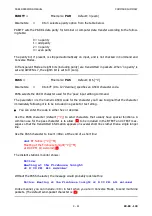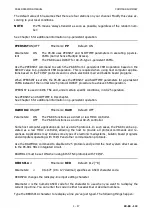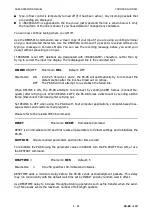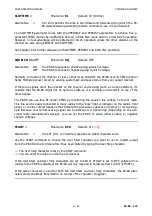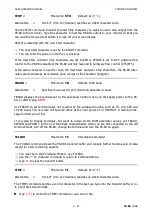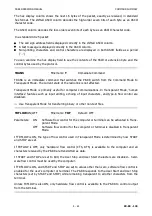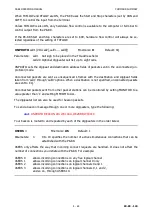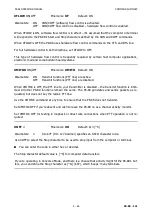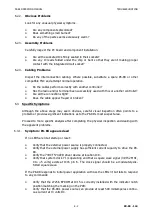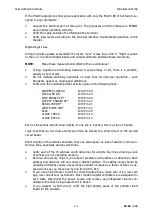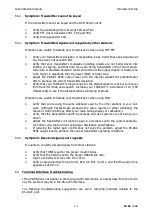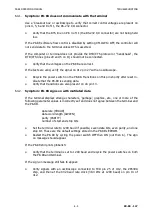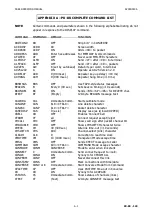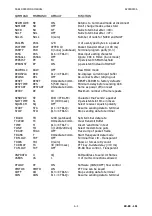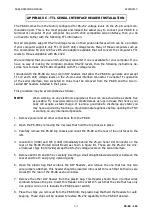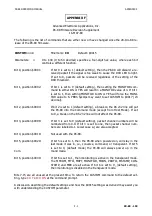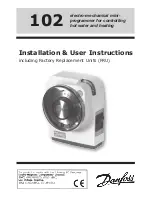
PK-88 OPERATING MANUAL
TROUBLESHOOTING
6 - 2
PK-88 - 144
6.2.2.
Obvious Problems
Look for any unusual physical symptoms.
o
Are any components discolored?
o
Does something smell burned?
o
Do any of the parts seems excessively warm?
6.2.3.
Assembly Problems
Carefully inspect the PC board and component installation.
o
Are all the socketed ICs firmly seated in their sockets?
o
Are any IC leads folded under the chip or bent so that they aren't making proper
contact with the integrated circuit socket?
6.2.4.
Cabling Problems
Inspect the interconnection cabling. Where possible, substitute a spare PK-88 or other
compatible TNC and attempt normal operation.
o
Do the cables perform correctly with another controller?
o
Has the radio and/or terminal been successfully used with this or another controller?
o
Are all the connections tight?
o
Does the cable appear frayed or broken?
6.3.
Specific Symptoms
Although the above steps may seem obvious, careful visual inspection often points to a
problem or provides significant indications as to the PK-88's most suspect area.
Proceed to more specific analysis after completing the physical inspection and dealing with
the apparent problems.
6.3.1.
Symptom: PK-88 appears dead
If no LEDS are lit at startup or reset:
o
Verify that the external power source is properly connected.
o
Verify that the external power supply has sufficient current capacity to drive the PK-
88.
o
Verify the 74HCT574 LED driver device at location IC9.
o
Verify that system clock Y1 is operating and that a square wave signal (4.9152 MHz,
0 to +5 volts) exists at IC16 pin 6. The clock signal should be a moderately-dis-
torted square wave.
If the PK-88 responds to initial power application with ALL the LEDs lit but fails to respond
to any commands:
o
Verify that the 27256 EPROM at IC15 is correctly installed with the indicator notch
position matching the marking on the PCB.
o
Verify that the PK-88's power source can provide at least 500 milliamperes continu-
ous current at 13 volts DC.

